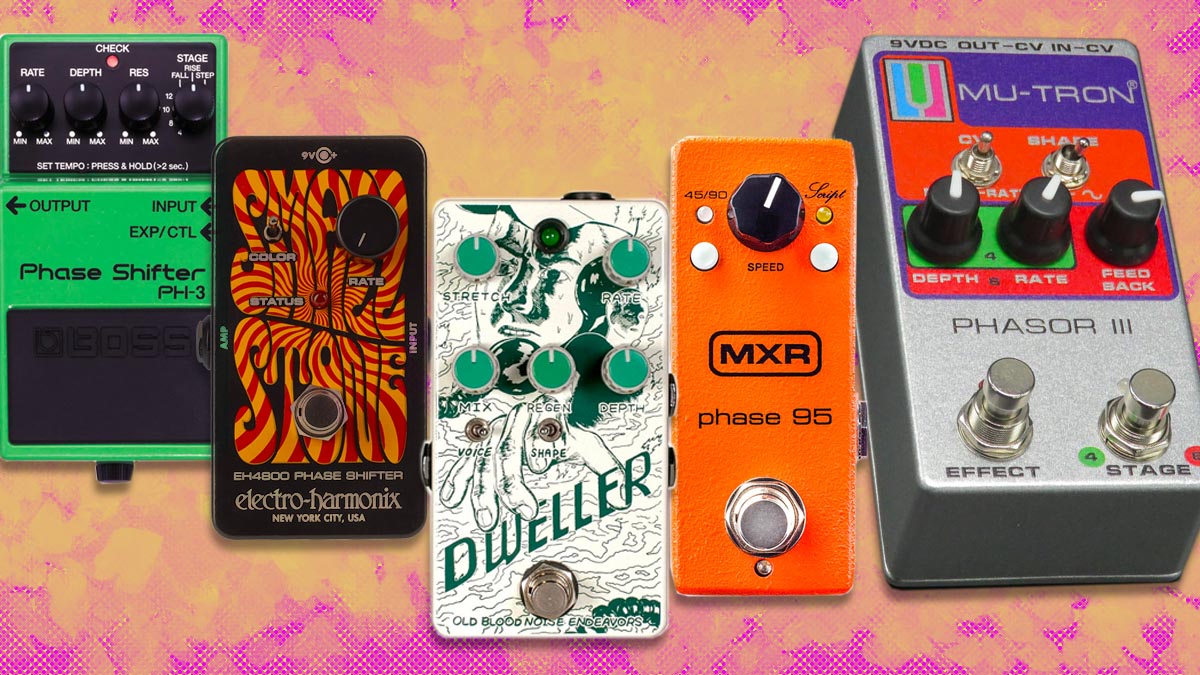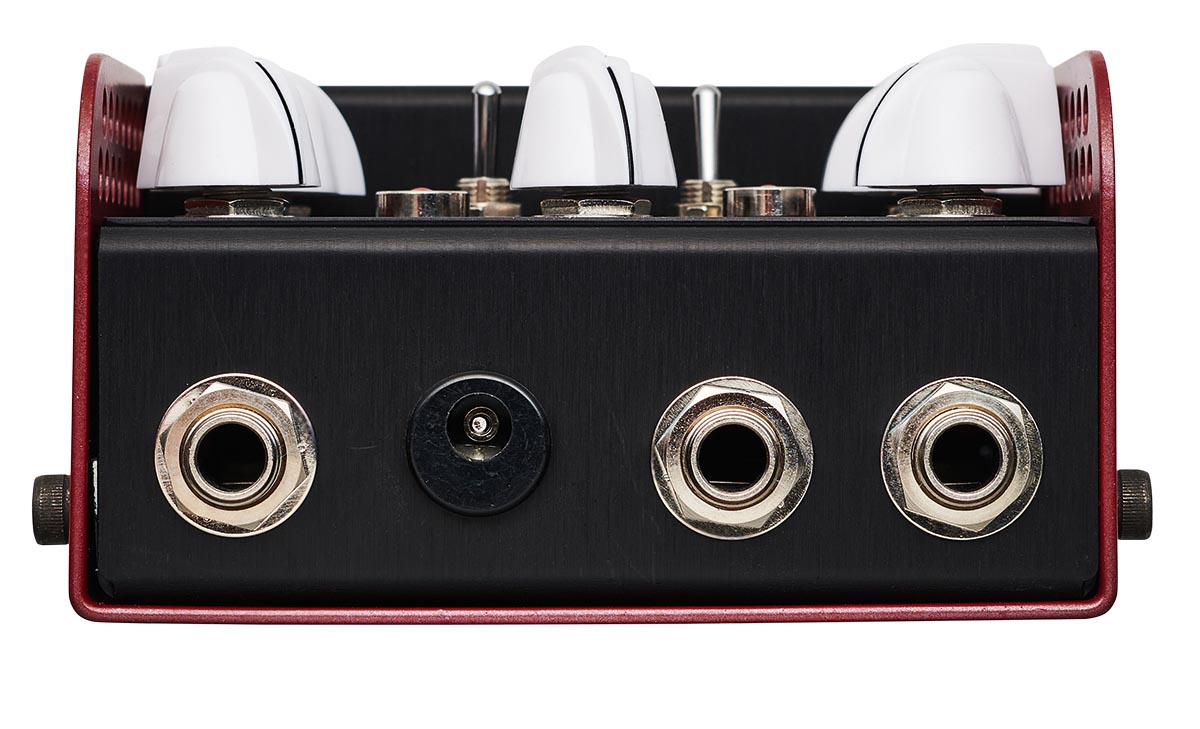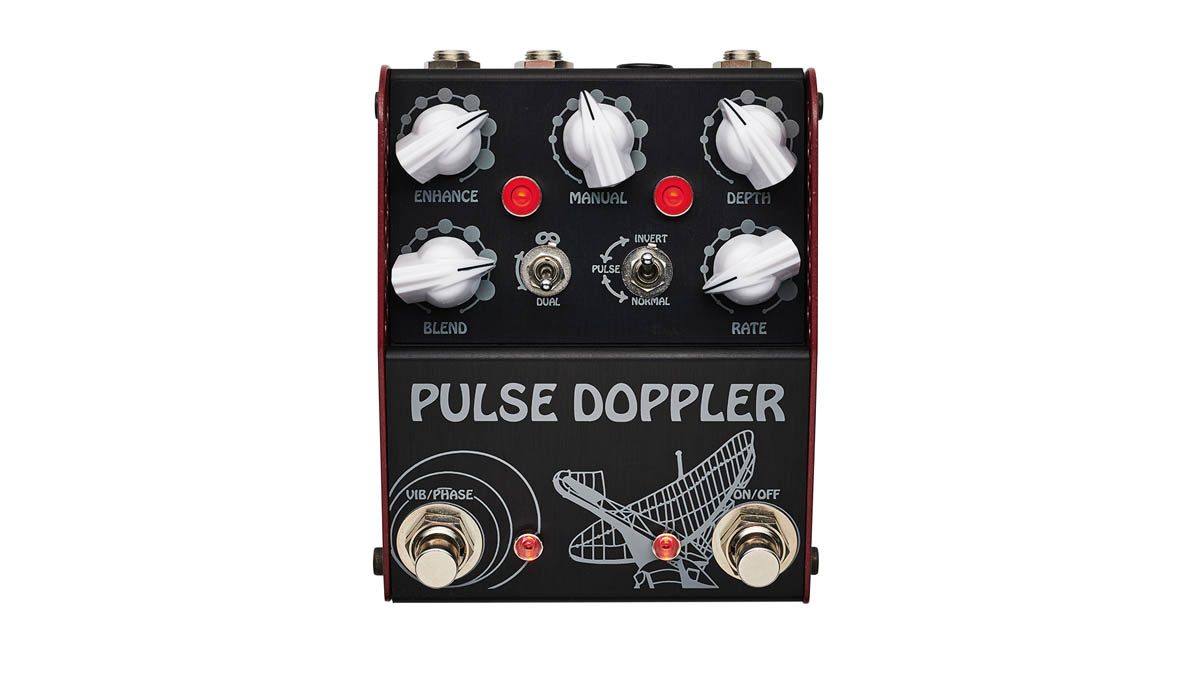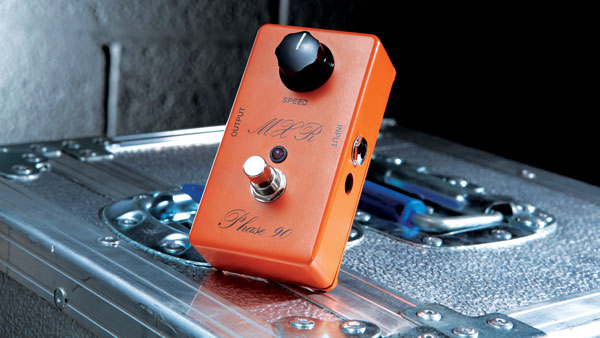MusicRadar Verdict
A more compact proposition than the Lovetone Doppelganger that inspired it, the Pulse Doppler is a hugely versatile stompbox, capable of classic phase shifting sounds, the throb of vibrato/tremolo, and a lot more besides.
Pros
- +
Wide array of controls, making for a wide array of sounds.
- +
More compact with top-mounted jacks.
- +
Typically robust ThorpyFX build.
Cons
- -
No presets.
MusicRadar's got your back
ThorpyFX Pulse Doppler: What is it?
The Pulse Doppler is the product of ThorpyFX supremo Adrian Thorpe and pedal guru Dan Coggins putting their heads together and taking another pass at one of Coggins’ classic designs – the Lovetone Doppelganger.
A much-feted phaser/vibrato from the 1990s, and a Coggins original, it has been reworked and refreshed here, with the idea that this would be a sort of do-it-all phaser pedal that can reproduce all kinds of classic modulation, from the heady swirl of mild phaser to full-on vibrato.
Essentially, it is a four-stage, two-notch phaser, but the way its controls work, each interacting with the other, offers a more complex proposition that requires some time with the manual and then even more time positioned by your pedalboard hunting around for some sounds to use.

There are a lot of sounds here, but first, the fundamentals. The enclosure has two footswitches, one for bypassing and engaging the effect, the other for switching between phaser and vibrato modes. There are white chickenhead controls for Blend, Enhance, Manual, Depth, and Rate.
These are complemented by toggle switches that select between notches modulated in sync (ie in Dual) or moving in opposition to one another in a figure-of-eight style when the toggle is in the up position.
There’s a three-way toggle switch that selects between Invert, Pulse and Normal modes, with Normal combining dry and phase-shifted signals for that classic, full phaser sound, Invert, where there are some off-piste sounds with a more “hollowed out” phaser sound, or in Pulse, where it cuts some of the low frequencies and acts as a modulated high-pass filter.

If all of this sounds confusing on the page, then that’s good, because it can be confusing on the pedal. Many of these controls are interactive. For instance, how you set the Blend control affects how noticeable the Invert mode is. Meanwhile, circling back to the control knobs, the Manual and Depth controls are in cahoots with one another and can have a dramatic effect on the intensity of your effect depending on where you set it.
Want all the hottest music and gear news, reviews, deals, features and more, direct to your inbox? Sign up here.
Under the hood, you’ve got a cornucopia of high-quality components, 1 per cent metal film resistors, WIMA and Panasonic capacitors (“where possible”), robust through-hole plated PCBs and so forth. All of which shouldn’t come as a surprise to anyone who has played one of Thorpe’s designs. And yes, it’s a good thing they are built to last because this is a pedal you will want to spend a lot of time on. Heck, you might need to.
The Pulse Doppler can be run in mono and in stereo, with Wet and Dry outputs for sending a phase-shifted signal to one amp and a dry signal to another, adding some serious width to your sound.

ThorpyFX Pulse Doppler: Performance and verdict
To say the Pulse Doppler has plenty of range to it is an understatement in the extreme. We can approach it as an all-analogue phase shifter and dial in those old-school Phase 90 sounds and Small Stone funk, the warm, chewy psych tones that have made these effects such a pedalboard mainstay over the years. Alternatively, you can take the scenic route through some truly oddball sounds, mimicking rotary speaker effects, or a heady ‘vibe swirl.
There is so much to get into that it is not long before you’ll find one great sound, then another, then spend a moment treading water as you try to get the Pulse Doppler to give you something that you want. This is a feature, not a bug.

• MXR CSP-026 '74 Vintage Phase 90
If you want that mid-seventies Phase 90 sound this reissue is as close as you'll get to it without trawling eBay for a battered original.
• EarthQuaker Devices Grand Orbiter
Though the core phaser sounds are excellent, perhaps more interesting is the addition of a pitch vibrato, that works surprisingly effectively – even if it is initially hard to work out just what the controls do when it’s in that mode.
The interactivity of the controls – particularly the Manual and Depth controls – and the many ways you can configure the effect, demand a certain amount of patience from the user until you find what you need. A pen and paper might be handy here, as there are no presets to save your favourite sounds.
Taking the dry sound out of the signal you can emulate synth-style noises, making for some outré adventures in tone. Don’t let the pedal’s complexity bother you, just keep at it and take notes of the controls’ position when you find a sound you like. Because this is more than just another old-school analogue phaser.
In a sense, it’s a pedal that you have to learn to play, and once you do it’ll unlock an abundance of cool sonic textures to play with, and in stereo, its psychedelic charms are all the more persuasive.
MusicRadar verdict: A more compact proposition than the Lovetone Doppelganger that inspired it, the Pulse Doppler is a hugely versatile stompbox, capable of classic phase shifting sounds, the throb of vibrato/tremolo, and a lot more besides.
ThorpyFX Pulse Doppler: The web says
"In A/B tests to see how the Pulse Doppler fared in recreating some classic vintage phaser sounds, we found the pedal had a brighter tonality than our '70s vintage pedals, but we were able to dial in the appropriate values to mimic the phasing action of our MXR Phase 90 and Electro-Harmonix Small Stone. Uni-Vibe sounds were likewise attainable as well as rotary speaker-style shadings."
Guitarist
"Cranking the ‘enhance’ knob can bring some pew-pew synth effects and, yes, there’s pitch vibrato too, which sounds lovely as long as you have everything set just so. And that, really, is the Pulse Doppler in a nutshell. It’s a complicated pedal that’s a bit of a minefield to navigate, but with just enough sonic treasures to make the journey worthwhile."
Guitar
ThorpyFX Pulse Doppler: Hands-on demos
Mike Hermans
Andy Martin
R.J. Ronquillo
Demos In The Dark
ThorpyFX Pulse Doppler: Specifications
- ORIGIN: UK
- TYPE: Phaser pedal FEATURES: Buffered bypass
- CONTROLS: Enhance, Manual, Depth, Blend, Rate, Dual switch, Invert/Pulse/Normal switch, Vib/Phase footswitch, Bypass footswitch
- CONNECTIONS: Standard input, standard outputs (Dry & Wet)
- POWER: 9V DC adaptor (not supplied)
- DIMENSIONS: 100 (w) x 129 (d) x 54mm (h)
- CONTACT: ThorpyFX
MusicRadar is the number one website for music-makers of all kinds, be they guitarists, drummers, keyboard players, DJs or producers...
- GEAR: We help musicians find the best gear with top-ranking gear round-ups and high-quality, authoritative reviews by a wide team of highly experienced experts.
- TIPS: We also provide tuition, from bite-sized tips to advanced work-outs and guidance from recognised musicians and stars.
- STARS: We talk to musicians and stars about their creative processes, and the nuts and bolts of their gear and technique. We give fans an insight into the craft of music-making that no other music website can.

